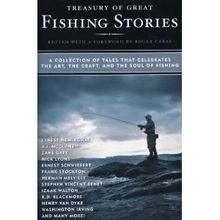Introduction
Fishing, an age-old pastime, requires not only patience but also a keen understanding of various techniques to ensure a successful catch. One such technique is the art of reeling and pressing lines, which can significantly improve your fishing experience. Whether you are a seasoned angler or a beginner, mastering these techniques can make a world of difference. In this article, we will delve into the intricacies of reeling and pressing lines, providing you with essential tips and tricks to enhance your fishing skills.
Understanding Reeling and Pressing Lines
Before we dive into the techniques, it's important to understand what reeling and pressing lines entail. Reeling is the process of winding the line from the reel onto the spool, while pressing lines refer to the act of maintaining tension on the line to prevent it from getting tangled or to keep the fish on the hook.
Choosing the Right Equipment
The first step in mastering reeling and pressing lines is to ensure you have the right equipment. Here are some key components to consider:
- Reel: Choose a reel that suits your fishing style and the type of fish you're targeting. Spinning reels are ideal for light tackle and smaller fish, while baitcasting reels are better for heavier lures and larger fish.
- Line: Select a line that matches the weight and type of lure you're using. Monofilament is versatile and forgiving, while fluorocarbon is nearly invisible underwater and has excellent knot strength.
- Leader: A leader is a shorter section of line that connects the main line to the lure. It provides extra protection for your main line and is especially important when fishing in areas with snags or heavy cover.
Basic Reeling Technique
Once you have the right equipment, it's time to learn the basic reeling technique. Here's how to do it:
- Hold the rod with a comfortable grip, keeping your wrist relaxed.
- Begin reeling with short, even strokes, allowing the line to flow smoothly off the spool.
- Avoid reeling too fast, as this can cause the line to twist or tangle.
- Pay attention to the direction of the line as it wraps around the spool. Keep it consistent to avoid snags.
Pressing Lines for Better Control
Pressing lines is crucial for maintaining control over your lure and preventing tangles. Here are some tips:
- Keep a slight tension on the line by pressing it gently with your index finger.
- Adjust the pressure as needed, depending on the type of fish you're targeting and the conditions of the water.
- When a fish strikes, press down harder to set the hook effectively.
- When bringing in a fish, press down to guide it towards the boat or shore.
Advanced Reeling Techniques
For those looking to take their fishing skills to the next level, here are some advanced reeling techniques:
- Rapid Fire Reeling: This technique involves reeling the line quickly and continuously to prevent a fish from breaking off. It's particularly useful when fighting larger fish or in windy conditions.
- Trolling: Trolling involves moving the boat at a steady speed to cover more water. To maintain the correct depth, use a weighted lure and adjust the speed of your reeling accordingly.
- Jigging: Jigging involves moving the lure up and down in a rhythmic motion to attract fish. Reel in short, quick strokes and then pause to allow the lure to sink before repeating the motion.
Common Mistakes to Avoid

To help you avoid common pitfalls, here are some mistakes to be aware of:
- Reeling Too Fast: This can cause the line to twist and tangle, or worse, snap under the strain of a fish.
- Lack of Tension: Not maintaining enough tension on the line can result in lost fish or tangles.
- Inconsistent Reeling: Reeling in a haphazard manner can lead to line twists and snags.
Conclusion
Reeling and pressing lines are fundamental skills that every angler should master. By understanding the basics and practicing the techniques outlined in this article, you'll be well on your way to becoming a more proficient fisherman. Remember, the key to success lies in patience, practice, and a willingness to learn. Happy fishing!












